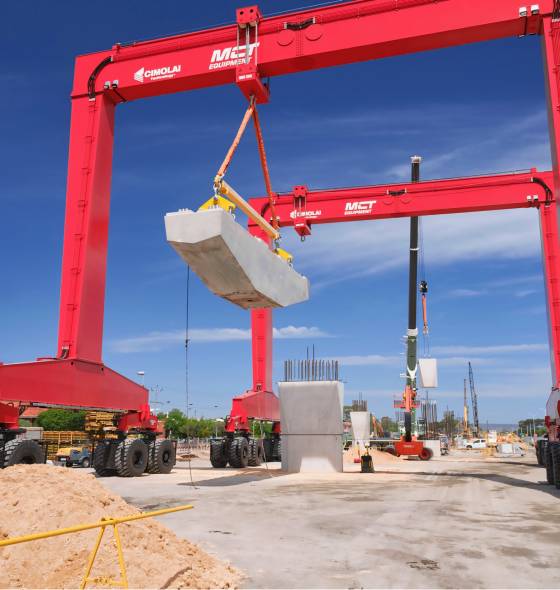Cranes are important in construction, mining, logistics, and ports. They handle heavy lifts and position materials accurately. But with constant use in demanding environments, these machines are prone to wear and tear. That’s where timely, professional crane repair comes in.
If you are a site manager, plant hire company, or equipment supervisor, knowing about crane repair is important. It can help you make better decisions, avoid expensive downtime, and keep the site safe. This guide outlines the full repair process, from diagnosis to recommissioning, and explains when to call in the experts.
Need to buy or hire a crane? View our range of cranes and alternative lifting solutions
Why Crane Repair Matters
Safety Comes First
A faulty crane poses a major safety risk—not only to operators but to everyone on-site. Ignoring problems like strange noises, shaky movements, or weak lifting power can cause serious issues. This may include equipment failure or collapse.
Small Issues Can Become Big Problems
Minor faults, if left unchecked, can quickly escalate into expensive repairs or full breakdowns. Addressing problems early through professional crane maintenance services can help avoid unplanned downtime and costly replacements.
Extend the Lifespan of Your Equipment
Routine crane service and repair not only keeps your machine operating safely but can also extend its working life. Preventative maintenance, when done correctly, saves money in the long run and keeps your operations running smoothly.

Common Causes of Crane Failures
Understanding what typically goes wrong can help you recognise early warning signs. The most common causes of crane issues include:
- Wear and tear on moving parts such as hoists, bearings, and gears
- Hydraulic leaks or pressure loss
- Electrical faults or problems with control panels and safety switches
- Overuse or improper load handling, leading to strain or misalignment
- Lack of routine maintenance, causing avoidable failures
Step-by-Step Crane Repair Process
1. Initial Inspection & Diagnostics
The first step is a detailed inspection, either on-site or at a specialised workshop. Technicians will use:
- Diagnostic tools
- Operator reports and logs
- Visual and mechanical checks
This stage helps pinpoint performance issues and safety risks.
2. Fault Identification
Technicians assess all key systems, including:
- Hydraulic and mechanical components
- Motors, hoists, and gearboxes
- Wiring and control systems
- Cables, pulleys, and hooks
Detailed testing identifies whether a repair or full part replacement is needed.
3. Repair Plan & Quoting
Once the fault is identified, a detailed plan is created outlining:
- Required repairs or replacements
- Estimated costs and downtime
- Safety considerations and compliance requirements
Work begins only after client approval.
4. Part Replacement or Component Repair
Repairs may involve:
- Replacing hydraulic hoses, motors, or electrical wiring
- Sourcing OEM or high-quality aftermarket parts
- Addressing structural damage or component alignment issues
Only certified components and industry-standard repair techniques are used.
5. Testing & Recommissioning
All repairs are followed by rigorous testing:
- Load testing under working conditions
- Electrical system checks
- Safety inspections aligned with Australian Standards (e.g., AS 2550, AS 1418)
Only after passing all checks is the crane cleared for operation.
6. Final Reporting
You’ll receive full documentation of:
- The work carried out
- Parts used
- Test results
- Recommendations for future maintenance or upgrades
This is essential for compliance and ongoing equipment tracking.
Why Choose MCT Equipment for Crane Repair?
When it comes to crane repair in Australia, MCT Equipment is the name site managers and operators trust. Founded in 2021, MCT is a family-run business built on a commitment to innovation, safety, and efficiency. Our team is led by Anthony Grosser, the CICA WA State Chair. We have a strong understanding of the lifting industry. We are also passionate about setting new standards.
We don’t just fix cranes. We support your whole lifting operation with custom solutions for construction, mining, infrastructure, and marine industries. Our customers count on us for:
- Proven expertise and technical knowledge
- Fast, reliable service that minimises downtime
- Top-quality products sourced from trusted manufacturers
- Compliance with Australian safety standards
With MCT Equipment, you’re choosing more than a service—you’re choosing a long-term partner in lifting performance.
Learn more about our team and values
How Often Should Cranes Be Repaired or Serviced?
The frequency of crane maintenance services depends on several factors:
- Manufacturer guidelines (typically found in your crane’s service manual)
- Site conditions and usage—cranes used in harsh or high-volume environments will need more frequent checks
- Legal inspection intervals, especially for high-risk equipment in Australia
As a general rule, cranes should be inspected every 3–6 months and undergo full servicing at least annually. Emergency checks should be scheduled immediately if issues or faults are found.
DIY Fixes vs Professional Repairs
Why DIY Isn’t Worth the Risk
Some small maintenance tasks can be done in-house, like greasing joints or checking for issues. However, most crane repairs should be done by certified professionals. Attempting complex repairs without training can:
- Void warranties
- Lead to non-compliance with safety regulations
- Increase the risk of injury or further damage
When to Call a Professional
Call in the pros when:
- The crane is underperforming
- There’s a visible leak or electrical fault
- You’re unsure about the cause of a problem
- It’s due for a scheduled inspection
Using a reputable service ensures quality workmanship, access to OEM parts, and adherence to Australian safety standards.
Perth’s Trusted Crane Repair Service
Professional crane service and repair isn’t just about fixing faults—it’s about keeping your operations safe, compliant, and efficient. Whether it’s a minor hydraulic issue or a major breakdown, knowing what the crane breakdown process involves helps you plan, budget, and respond with confidence. View our crane repair and inspection services.

